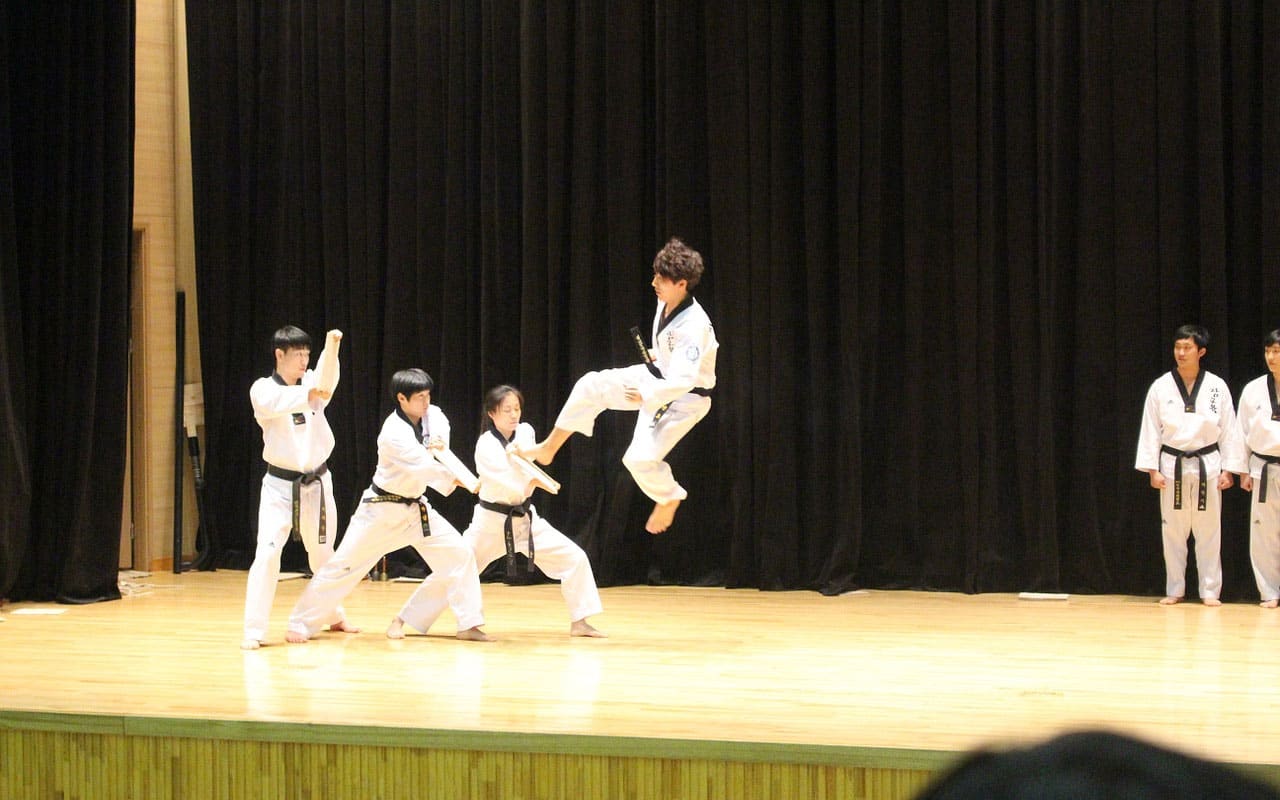There is an immense amount of conversation about different aspects of martial arts, mostly about their effectiveness, but also about their history, the weapons they used, the movies they were in, etc. However, there isn’t all that much of a conversation going on about the safety of training these sports. In fact, it is in recent years or decades that people have started to heavily research these topics in the scientific communities. To make the job easier for you, we have collected some information on how dangerous it is to train the popular Korean martial art of Taekwondo if you are perchance interested in taking it up as a sport.
Taekwondo is relatively safe to train, especially compared to many other martial arts that include many strikes to the head unlike Taekwondo, which is one of the primary causes of brain injury in athletes and MMA fighters alike.
However, that doesn’t mean Taekwondo is completely safe, or that you can go to training without any precaution whatsoever. There have been, there are, and there will continue to be some heavy injuries in Taekwondo practice, but in this article, we will try comparing it to the number of injuries in different sports and martial arts, as well as give a general overview of the dangerousness of practicing this combat style. Read on if you are interested!
Is It Safe to Train Taekwondo?
So, the big question: is it safe to train Taekwondo? In short, the answer to that is yes. However, as with all analyses, there are more ways you can come at it from, and in this section of our article, we will try to discuss a couple of them.
So first of all, regardless of other martial arts and comparison to them, is martial arts training and more specifically Taekwondo training a safe thing to do? Well, not really. When you compare it to a person who doesn’t do anything or perhaps has some hobbies like playing chess, reading or painting, martial arts is clearly more dangerous. After all, you go there to learn how to fight, and fighting is the closest you can get to injury and death aside from possibly gun training and rope-free mountain climbing, out of all the hobbies you can do.
The type of injuries you can sustain at a Taekwondo dojo are various. The most common type of injury is probably muscle strains or joint strains. Fractures are quite uncommon, but since Taekwondo is such an athletic art that requires jumping and kicking with full power and speed, it is quite common to strain your legs or ankles in combat or even in practice.
Though rare, some fractures also exist in Taekwondo, and there are two types of them. One is self-inflicted, like an accidental ankle fracture due to wrong footwork or a bad landing, and the other is accidental damage caused by another person, like a kick to the head which might cause one’s nose to break, or a foot sweep which can also break some bones.
Most of the damage and injury in Taekwondo classes comes from bruises, which don’t cause too much trouble, aside from the fact that they can hurt quite a lot. In general, though, Taekwondo is one of the safest arts to train, and there is quite a simple reason for it: in many places, kicks to the head are banned, and even where they aren’t, they aren’t frequent. Kicks to the body and legs can also hurt and cause injury, of course, but anyone would much rather take a strong kick to the knee than a similar kick to the jaw.
YOu could also just go with the philosophy of “everything is dangerous to some extent, so stay at home if you want to avoid it, I will go enjoy life”, however, you don’t even need such a Carpe Diem mindset to know that you won’t risk your life on a Taekwondo class. If you pay attention to warming up properly, staying hydrated, and sleeping enough, the only possible source of injury you might get is an accidental knockout, possibly with a concussion, though that’s as rare as a white raven in TKD. Don’t let the possibility of injury hold you back, since it is truly minimal, and also, why not train in arts instead of martial arts if you want to avoid all danger?
Can Taekwondo Cause Brain Damage?
A major point for most people when talking about things like MMA or martial arts is the brain damage that seems to have been caused by the years of beating on each other’s heads. There is clear scientific evidence that certain types of physical activities, sports, and combat systems can cause relatively severe brain damage, so much so that they can contribute to the development of diseases such as early-onset Alzheimer’s or epilepsy.
So how does Taekwondo do in these terms? Actually, the sports and fighting styles that cause the brain damage topic to be researched more and more are almost never Eastern martial arts. Western ones like boxing, kickboxing, and sometimes even wrestling are some of the worst offenders in this category. The only Eastern martial art which seems to be more dangerous in these terms is Muay Thai, but that might just be because it is more well-known, and thus more injuries are reported. Aside from these, sports like rugby, American football, and soccer all seem to have similar effects on the brain.
The way this happens is actually not by the blunt force of the impact, but the shaking of the brain in the skull as a result of the said impact that causes the brain a lot of damage. Surprisingly, concussions often happen much more because of the impact of one’s head on the ground, and not from the blow that got them there in the first place. When the brain shakes in the skull, the cerebrospinal fluid gets tossed all around, the brain touches the skull with an impact, and then as a result of all of these, a lot of neurons die, parts of the brain might even sometimes get disconnected, etc.
Now, to see whether TKD affects people in these ways, we have to look at the frequency of knockouts and large head hits, which is much, much lower than in other sports like boxing or rugby. In many Taekwondo associations, there are bans on head-kicking until the age of 14 or sometimes to 17, and even if you are older, you aren’t likely to encounter head kicks, let alone powerful and accurate ones, all until you reach a certain level of expertise and start sparring with professional, experienced fighters. By this time, you will be trained enough to avoid most of these kicks, which means that in a decade-long journey of TKD even, you might not get knocked out even once. Even if you do, it probably won’t be near as tough on you as even one session of sparring for boxers, which can mean dozens or even hundreds of head-strikes in a span of minutes.
Is Taekwondo Useful?
Is Taekwondo useful and worth the slight possibility of head injury? Absolutely. It is really safe, and also quite effective, which makes for a great combination of characteristics. Training TKD won’t only teach you how to defend yourself and how to kick someone in the face, but it will also teach you how to fall, how to be more aware of your surroundings, and also condition you in a way that you will quite simply be tougher.
Due to the many hours of strength training and flexibility training, you will get when training in Taekwondo, your muscles will be stronger, your cardiovascular system will also be healthier, your bones will be denser and more robust and your joints will also be more resistant. This in and of itself is enough reason for one to start training TKD. Aside from all this, the mental health benefits are also spectacular, as many people have reported feeling like TKD cured their anxiety, sometimes depression, the feeling of being lost in life, and more. It also teaches you to concentrate better and to be able to be present at the moment.
Furthermore, the skills you can gain by learning Taekwondo are more than enough for most street altercations and are also enough for you to avoid most knockouts or possibilities of injury. All martial arts are amazing (legitimate and authentic ones, that is), but Taekwondo has a special place in people’s hearts due to it being one of the most good-looking and visually exciting art forms to train in, and the added benefits of all the physiological and psychological improvements just make it all the better. If all this hasn’t convinced you to start training, try going to the local dojo (if it isn’t a McDojo) to take part in a training or just talk to the people there, and you will see that nobody regrets learning this wonderful art.

